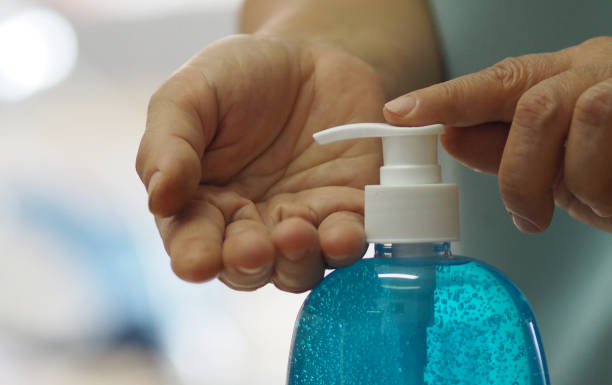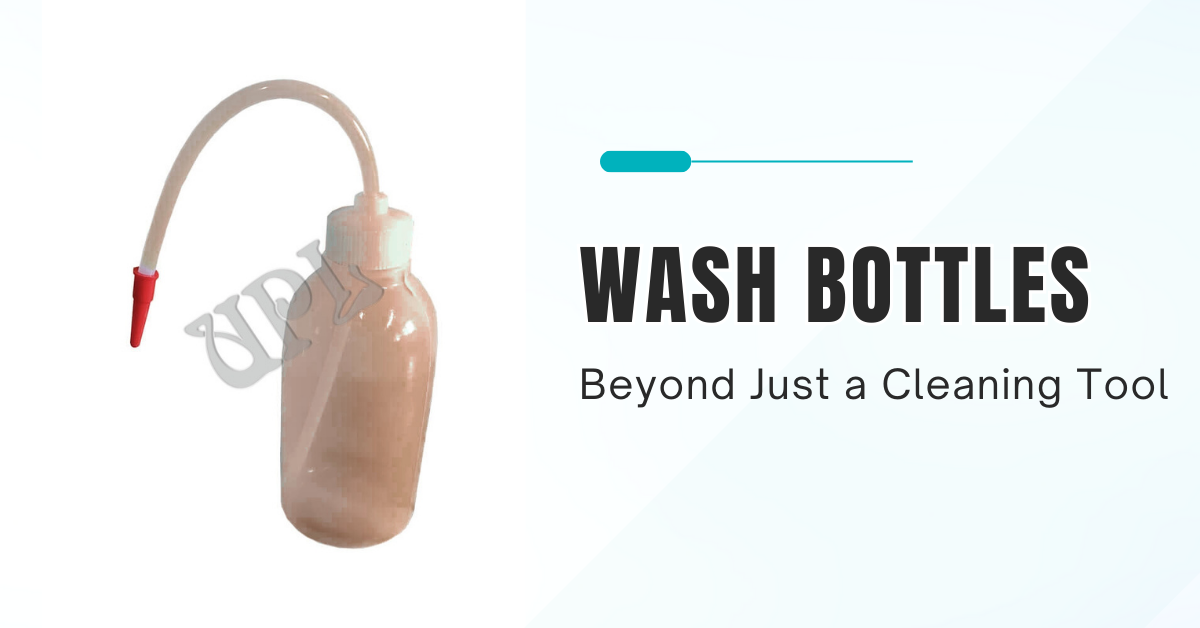When it comes to laboratory equipment, some tools may not receive as much attention as the high-tech devices and intricate instruments that fill the workspace. Among these overlooked yet essential tools is the wash bottle. Known for its simple design and straightforward functionality, the wash bottle is an indispensable item in any lab setting. However, the wash bottle does more than just clean—it plays a vital role in ensuring safe, efficient, and accurate laboratory operations.
In this blog, we will explore the multifaceted uses of the wash bottle, how it is designed, and why this unassuming tool is so much more than just a vessel for cleaning. Whether you’re a seasoned lab technician, a researcher, or someone new to laboratory environments, understanding the versatility of the wash bottle can greatly improve your lab experience.
What is a Wash Bottle?
Before exploring the various applications of wash bottles, it’s important to first understand their design, functionality, and construction. A wash bottle is a simple yet highly effective tool, typically taking the form of a squeezable container with a narrow spout through which liquids are dispensed in a controlled stream. The bottle is often constructed from materials like low-density polyethylene (LDPE), known for its flexibility and chemical resistance, though glass variants are also used for more specialized applications. These bottles generally contain deionized water, solvents, or cleaning solutions depending on the purpose they serve in the lab.

What sets wash bottles apart from other liquid containers is their ergonomic design, allowing users to dispense liquids with precision, simply by applying pressure to the flexible body. Unlike traditional containers that require tilting or intricate mechanisms to pour liquids, wash bottles are straightforward and user-friendly. By squeezing the bottle, liquid is forced out through the spout, which is typically angled for optimal control. This makes wash bottles particularly well-suited for tasks that require precision, such as rinsing delicate laboratory glassware, cleaning instruments, and even assisting in sample preparation or experiments. Their versatility and ease of use make them indispensable in both educational and professional laboratory settings.
The Versatility of Wash Bottles
Wash bottles may seem basic at first glance, but their versatility makes them valuable for a wide range of applications in laboratories, educational settings, and even industries. Let’s look at the many roles wash bottles can play.
- Cleaning and Rinsing Laboratory Glassware
The most common use for wash bottles is to clean and rinse glassware, such as beakers, test tubes, and burettes. Laboratories often deal with chemicals that leave behind residue or particles that can contaminate future experiments if not cleaned properly. A wash bottle filled with deionized water or a suitable solvent can easily flush out contaminants, ensuring that lab equipment is free from unwanted substances. - Adding Precision in Titrations
Titration experiments are essential in chemistry for determining the concentration of a solution. Wash bottles come in handy for rinsing the walls of the reaction vessel during titration, ensuring that all reactants mix properly without leaving behind any residual chemicals. This added precision can significantly affect the accuracy of titration results, making the wash bottle an essential part of the process. - Maintaining Sterility
In biology and medical labs, maintaining a sterile environment is crucial. Wash bottles filled with sterile saline or ethanol can be used to clean instruments, gloves, or surfaces before conducting sensitive procedures like cell culture or microbiological tests. Using wash bottles for such tasks minimizes the risk of contamination, safeguarding the integrity of the research. - Rinsing Electrodes and Sensors
In laboratories dealing with pH measurements, conductivity tests, or other types of electronic sensors, wash bottles play a critical role in rinsing and cleaning electrodes between uses. Any contamination on these delicate instruments can alter readings, leading to inaccurate results. By rinsing with deionized water or other specialized solutions, wash bottles help maintain the performance and longevity of these devices. - Chemical Transfer and Dispensing
Wash bottles are not just for rinsing; they are also useful for transferring small amounts of liquids from one container to another. When working with volatile or hazardous chemicals, using a wash bottle allows for better control and minimizes the risk of spills or accidents. The narrow spout enables precise delivery, making wash bottles useful for filling burettes, pipettes, or even preparing reagents. - Aiding in Sample Preparation
In environmental, biological, or chemical testing labs, sample preparation is a critical step that often requires the addition of specific solvents or reagents. Wash bottles can be used to introduce these liquids in controlled amounts. For example, a biologist might use a wash bottle to rinse cells or tissues, while a chemist might add solvents to a reaction flask.
Types of Wash Bottles
Wash bottles come in various designs, each catering to specific needs. Depending on the application, the material, shape, and size of a wash bottle can differ. Here are the most common types:
- Plastic Wash Bottles
Plastic wash bottles, typically made of low-density polyethylene (LDPE), are the most common type found in labs. They are lightweight, flexible, and resistant to a wide range of chemicals. Their squeezable nature makes them ideal for tasks where precise control over liquid dispensing is required. These bottles are also durable and unlikely to break, making them safe to use in busy environments. - Glass Wash Bottles
Although less common than plastic bottles, glass wash bottles are used in applications where chemical resistance is a top priority. Some solvents can degrade or react with plastics, making glass a better option. However, glass wash bottles are more fragile and may not be suitable for high-traffic areas or when working with hazardous substances that could spill if the bottle breaks. - Safety-Labeled Wash Bottles
To ensure safety and prevent cross-contamination, many wash bottles come with pre-labeled content indicators. These safety-labeled wash bottles are specifically marked for substances like acetone, ethanol, methanol, or deionized water. The labeling minimizes the risk of accidentally using the wrong solution, which could lead to experimental failure or, worse, dangerous chemical reactions. - Vent-Capped Wash Bottles
Vent-capped wash bottles feature a cap that allows air to flow in while preventing liquid from leaking out. This design is especially helpful when dealing with volatile substances that could evaporate or when working in environments that require careful handling of reactive liquids. The vent-capped design also helps prevent pressure buildup inside the bottle, enhancing user safety.
Benefits of Using Wash Bottles
The simplicity of the wash bottle’s design doesn’t detract from its many benefits. Let’s explore why wash bottles are so essential to laboratories and other settings.
- Improved Accuracy and Control
Unlike open containers or beakers, wash bottles allow for precise dispensing of liquids, making it easier to control the flow and amount. Whether you’re rinsing glassware, adding solvents, or transferring chemicals, this control helps prevent wastage and ensures that you use the correct amount of liquid. - Safety
Safety is always a top priority in laboratories. The closed design of wash bottles minimizes the risk of spills, splashes, or accidental exposure to hazardous chemicals. By using the spout, you can direct the liquid exactly where it’s needed, avoiding unnecessary contact with skin or sensitive equipment. - Time Efficiency
Using wash bottles speeds up routine tasks like cleaning, rinsing, and sample preparation. Instead of fumbling with open containers or pipettes, lab technicians can simply squeeze the wash bottle to dispense the required amount of liquid, saving time and increasing efficiency. - Chemical Compatibility
Wash bottles are made from materials that are resistant to a variety of chemicals. Whether you’re working with acids, bases, solvents, or even oils, there’s a wash bottle material suited for the task. This flexibility allows wash bottles to be used in virtually any type of lab environment. - Reduced Waste
Because wash bottles provide controlled dispensing, they help reduce waste by allowing users to apply the exact amount of liquid they need. This is especially beneficial when working with expensive reagents or chemicals that should be used sparingly.
Beyond the Laboratory: Other Uses for Wash Bottles
While wash bottles are a staple in laboratory environments, they are not limited to lab use. Their versatile design has led to their adoption in various other fields.
- Medical and Healthcare Settings
In hospitals and clinics, wash bottles are often used to dispense sterile water or saline solutions for cleaning wounds, flushing out instruments, or hydrating patients. Their sterile, easy-to-use design makes them a hygienic option for quick applications in medical settings. - Art and Restoration
Artists and conservators use wash bottles for delicate work that requires precision. For instance, a wash bottle filled with water or cleaning solvent can be used to remove dust, dirt, or old varnish from paintings and sculptures. Their ability to deliver a controlled flow of liquid is essential in avoiding damage to fragile surfaces. - Automotive and Mechanical Work
In workshops, wash bottles can be filled with cleaning solutions or lubricants and used to maintain machinery and vehicles. The fine-tipped spout allows mechanics to apply liquids in hard-to-reach areas without over-saturating parts or causing spills. - Gardening
For home gardeners, wash bottles can be repurposed for watering small plants, delivering nutrients, or even applying insecticides. Their controlled dispensing helps avoid overwatering and ensures that chemicals or fertilizers are applied in the right amount.
Tips for Using Wash Bottles Effectively
While wash bottles are straightforward to use, there are a few tips to ensure you’re getting the most out of them:
- Choose the Right Material: Ensure that the wash bottle is made of a material compatible with the liquid it will contain. For example, use glass wash bottles for strong solvents that may degrade plastic.
- Label Clearly: Always label wash bottles, especially if they are being used to store chemicals. This minimizes the risk of cross-contamination or accidental misuse.
- Maintain Cleanliness: Regularly clean wash bottles, especially if they are used with multiple substances. Residue from previous contents can react with new solutions, leading to contamination or even dangerous reactions.
- Store Safely: Store wash bottles in a cool, dry place, away from direct sunlight or heat sources, to prevent degradation of the material or evaporation of the contents.
The wash bottle is much more than a simple cleaning tool—it is a highly versatile, precise, and safe instrument, making it indispensable in numerous professional environments. In laboratory operations, wash bottles ensure that delicate glassware is thoroughly rinsed and free from contaminants, while also aiding in precise tasks like Titration. Their controlled dispensing mechanism allows users to apply solutions without spillage or wastage, enhancing both accuracy and efficiency.
In medical procedures, wash bottles play a critical role by providing sterile solutions for cleaning wounds, flushing instruments, or delivering saline in a hygienic, controlled manner. Similarly, in the field of art restoration, wash bottles allow conservators to delicately clean artwork without damaging fragile surfaces, offering precision that traditional methods lack.
Mechanics and engineers benefit from the wash bottle’s precision too, using them to lubricate or clean hard-to-reach parts of machinery without over-applying liquids. The adaptability of wash bottles, available in various materials like plastic or glass, ensures they meet the unique requirements of each field, from chemical resistance to durability.
By incorporating wash bottles into daily operations, professionals across diverse industries can significantly improve the safety, accuracy, and efficiency of their work, showcasing the profound impact of this seemingly simple tool.






